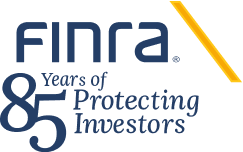Proposed Amendment to Article III, Section 35 of the NASD Rules of Fair Practice Concerning Testimonials
IMPORTANT MAIL VOTE
OFFICERS, PARTNERS, AND PROPRIETORS
TO: All NASD Members
LAST VOTING DATE IS NOVEMBER 13, 1987.
EXECUTIVE SUMMARY
NASD members are invited to vote on a proposed amendment to Article III, Section 35(d)(2)(D) relating to testimonials used in members' communications with the public. The proposed amendment would conform the NASD rule to that of the New York Stock Exchange.
The text of the proposed amendment is attached.
BACKGROUND
Article III, Section 35 of the NASD Rules of Fair Practice relates to members' communications with the public and contains specific standards governing testimonials used in such communications. The current NASD rule applies to testimonial material concerning any advice, analysis, report, or other investment or related service rendered by the member and requires that members make clear that such experience is not necessarily indicative of future performance or of results obtained by others. A testimonial also must disclose compensation paid to the maker, and, if it implies a specialized opinion, the qualifications of the maker of the testimonial must be stipulated.
When the NASD rule was originally adopted in 1980, the standards incorporated in the rule were patterned after those of New York Stock Exchange Rule 472.40(8) for purposes of consistency and reduction of unnecessary regulatory burdens on dual NASD/NYSE members. The NYSE has since amended its testimonial rule and a conforming amendment to Article III, Section 35(d)(2)(D) of the NASD Rules of Fair Practice has been approved by the NASD Board of Governors and is now being submitted for membership approval. Prior to becoming effective, the rule change must also be approved by the Securities and Exchange Commission.
PROPOSED AMENDMENT
The NASD's proposed amendment applies only to testimonials that concern the quality of a firm's investment advice. Limiting testimonial treatment to communications that relate to the quality of investment advice is consistent with other provisions of the NASD rule that focus upon disclosing that future performance may not be consistent with the experience of the individual giving the testimonial. The NASD's proposed amendment also requires disclosure of compensation only if it is more than a nominal amount.
COMMENTS RECEIVED
The proposed amendment to Article III, Section 35(d)(2)(D) of the NASD Rules of Fair Practice was published for comment in NASD Notice to Members 87-40 dated June 22, 1987. The NASD received four comment letters, which generally favored the rule proposal. Of these, one favored adopting the rule amendment without reservation while the other three favored the proposal but recommended that the amendment's provisions include more explicit standards. For example, it was suggested that the term "nominal" be defined.
The NASD National Business Conduct Committee reviewed the comments and recommended that the NASD Board of Governors approve the amendment as originally proposed. The Board of Governors approved the NBCC's recommendation.
* * * *
The Board believes that the proposed amendment to Article III, Section 35(d)(2)(D) of the NASD Rules of Fair Practice is necessary and appropriate to eliminate inconsistent regulation in the securities industry and recommends that members vote their approval.
Please mark the attached ballot according to your convictions and return it in the enclosed, stamped envelope to "The Corporation Trust Company." Ballots must be postmarked no later than November 13, 1987.
Questions concerning this notice may be directed to either Ms. R. Clark Hooper, NASD Advertising Department, at (202) 728-8330, or Ms. Eneida Rosa, NASD Office of General Counsel, at (202) 728-8294.
Sincerely,
Frank J. Wilson
Executive Vice President
Legal and Compliance
Attachment
PROPOSED AMENDMENT TO ARTICLE III, SECTION 35 OF THE NASD RULES OF FAIR PRACTICE*
Communications With the Public
Section 35
•
•
•
•
•
•
In testimonials concerning the quality of a firm's investment advice, the following points must be clearly stated in the communication:
*New language is underlined; deleted language is in brackets.
